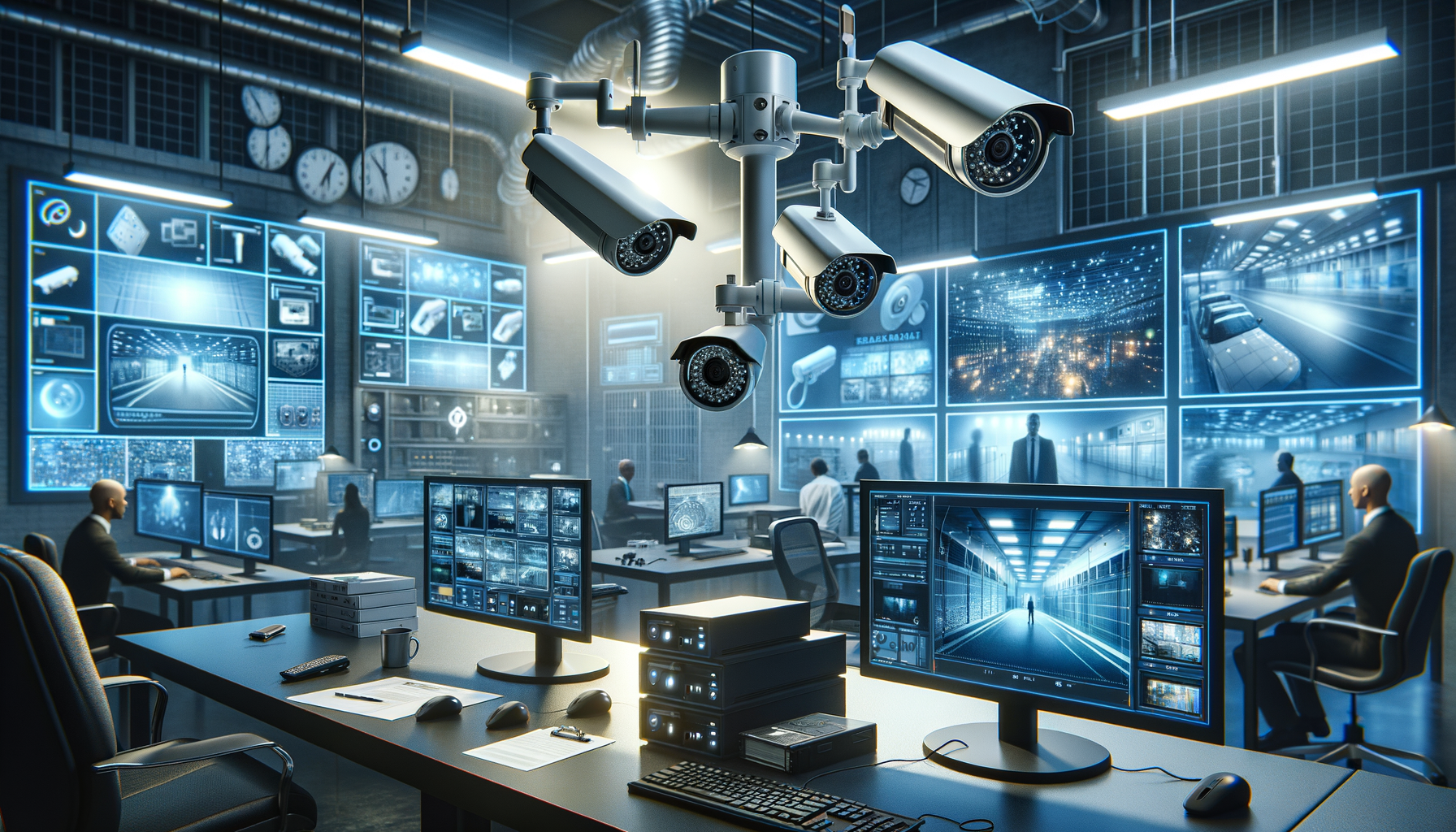The Role of Security & Surveillance Cameras in Modern Society
In today’s fast-paced world, security and surveillance cameras have become integral to ensuring safety and security. These devices are not just tools for monitoring but have evolved into sophisticated systems that deter crime, provide evidence, and offer peace of mind. As urban areas expand and technological advancements continue, the need for effective surveillance solutions becomes increasingly crucial.
Security cameras play a pivotal role in various settings, from residential areas to commercial establishments and public spaces. They act as a deterrent to potential criminals, reducing the likelihood of unlawful activities. Moreover, in the unfortunate event of a crime, surveillance footage can serve as valuable evidence for law enforcement agencies, aiding in the identification and apprehension of offenders.
Furthermore, the presence of surveillance systems can enhance the sense of security among individuals. Knowing that there is a mechanism in place to monitor and record activities can provide reassurance to residents, employees, and customers alike. This sense of security can lead to increased productivity and a more positive environment in workplaces and communities.
Technological Advancements in Surveillance Systems
The evolution of technology has significantly impacted the development of surveillance systems. Modern security cameras are equipped with advanced features that enhance their functionality and effectiveness. High-definition video quality, night vision capabilities, and motion detection are just a few of the features that have become standard in contemporary surveillance cameras.
One of the most significant advancements is the integration of artificial intelligence (AI) and machine learning in surveillance systems. These technologies enable cameras to analyze footage in real-time, identifying unusual patterns or behaviors that may indicate a security threat. AI-powered cameras can distinguish between different types of movements, such as a person walking or a car driving by, and alert security personnel to potential issues.
Additionally, the rise of cloud-based storage solutions has revolutionized how surveillance footage is stored and accessed. Instead of relying on physical storage devices, many systems now offer cloud storage options, allowing users to access footage from anywhere with an internet connection. This advancement not only enhances convenience but also ensures that valuable data is securely stored and easily retrievable.
Choosing the Right Surveillance System for Your Needs
Selecting the appropriate surveillance system can be a daunting task, given the plethora of options available in the market. To make an informed decision, it is essential to consider several factors, including the specific security needs, budget, and the environment where the system will be deployed.
One of the first considerations is the type of camera that suits the intended application. For instance, dome cameras are often used indoors due to their discreet design, while bullet cameras are more suitable for outdoor use because of their durability and long-range capabilities. Additionally, it is crucial to assess whether a wired or wireless system is more appropriate, taking into account factors such as installation complexity and potential interference.
Another important aspect is the resolution of the cameras. Higher resolution cameras provide clearer images, which can be vital for identifying details such as facial features or license plates. However, higher resolution cameras also require more storage capacity and bandwidth, which should be factored into the decision-making process.
The Impact of Surveillance on Privacy and Ethics
While surveillance cameras offer numerous benefits in terms of security, they also raise concerns about privacy and ethical implications. The widespread use of these devices has sparked debates about the balance between safety and individual privacy rights.
One of the primary concerns is the potential for surveillance cameras to infringe on personal privacy. In public spaces, individuals may feel that their movements and activities are being constantly monitored, leading to a sense of unease. To address these concerns, it is essential for surveillance systems to be implemented with clear guidelines and transparency, ensuring that individuals are aware of when and where they are being monitored.
Moreover, ethical considerations must be taken into account when deploying surveillance systems. Organizations and authorities must ensure that the use of surveillance cameras is justified and proportionate to the security needs. This involves conducting thorough risk assessments and considering alternative measures that may achieve the same security objectives without compromising privacy.
Future Trends in Security & Surveillance Technology
The future of security and surveillance technology is poised for exciting developments, driven by ongoing advancements in artificial intelligence, the Internet of Things (IoT), and data analytics. These innovations promise to enhance the capabilities of surveillance systems, making them more efficient, intelligent, and user-friendly.
One emerging trend is the integration of IoT devices with surveillance systems. This connectivity allows for seamless communication between different security devices, creating a comprehensive security network. For example, motion sensors, alarms, and cameras can work together to provide real-time alerts and automated responses to potential threats.
Additionally, the use of big data analytics in surveillance is set to transform how security data is processed and utilized. By analyzing large volumes of data, surveillance systems can identify patterns and trends, enabling proactive security measures and informed decision-making. This capability is particularly beneficial for large-scale operations, such as city-wide surveillance networks.



Leave a Reply